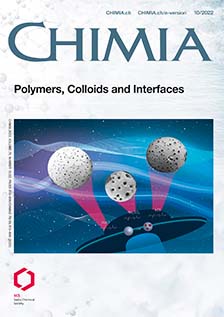Manufacturing Large-scale Materials with Structural Color
DOI:
https://doi.org/10.2533/chimia.2022.833PMID:
38069695Keywords:
Additive manufacturing, Manufacturing methods, Maunfactirung methods, Structural color, SustainabilityAbstract
Living organisms frequently use structural color for coloration as an alternative mechanism to chemical pigmentation. Recently there has been a growing interest to translate structural color into synthetic materials as a more durable and less hazardous alternative to conventional pigments. Efforts to fabricate structurally colored materials take place in different fronts, from 3D printing to spray-coating and roll-to-roll casting. Stability, performance, and quality of the color, the environmental impact of the materials or their manufacturing methods are some of the heavily researched topics we discuss. First, we highlight recent examples of large-scale manufacturing technologies to fabricate structurally colored objects. Second, we discuss the current challenges to be tackled to create perfect appearances which aim at the full color gamut while caring for environmental concerns. Finally, we discuss possible scenarios that could be followed in order to involve other manufacturing methods for creating structurally colored objects.
Funding data
-
National Center of Competence in Research Bio-Inspired Materials, University of Fribourg
Grant numbers 51NF40_182881
Downloads
Published
Issue
Section
License
Copyright (c) 2022 Lukas Schertel, Sofia Magkiriadou, Pavel Yazhgur, Ahmet Demirörs

This work is licensed under a Creative Commons Attribution 4.0 International License.







